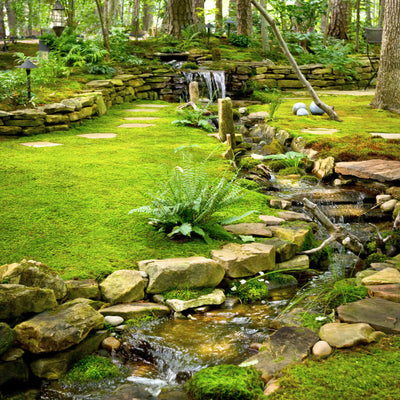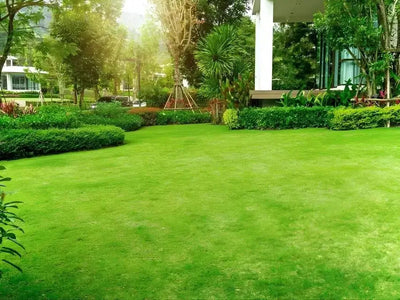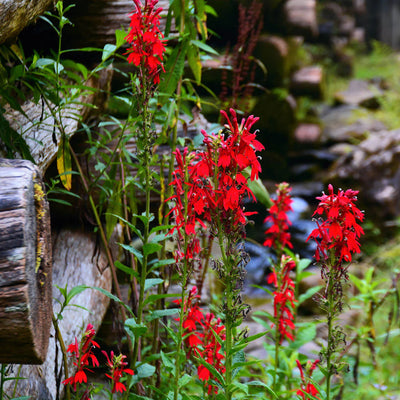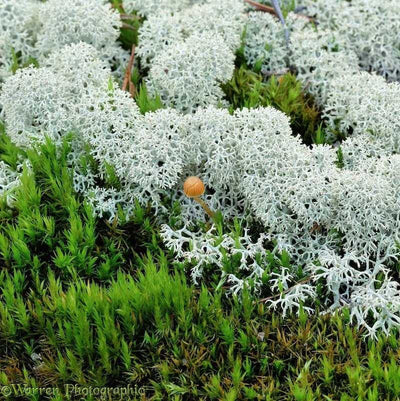Sheet Moss: Easy to Plant and Grow - A Complete Guide to Its Advantages
In landscape design, some people forget to associate moss with landscape, especially the Sheet Moss (Hypnum) species. People take long to realize the wonders of this species due to the fact it grows well in conditions where the rest struggle. If you have oppressive shade and compacted soil, or just a damp and neglected part of the garden, it will prove to be such a wonderful, low effort, and green solution. In this article, we will explore the fact that, apart from being extremely easy to plant and cultivate, sheet moss will also improve the appearance and sustainability of your garden or yard.
The Benefits of Growing Sheet Moss On Areas With No Direct Sunlight
Sheet moss is a form of moss that grows untended in shady places such as woods, hills, and on the sides of rocks. Sheet moss is a good addition to your garden as it is able to grow even in places that do not receive a lot of sunlight. Compared to grass and other ground covers, sheet moss is able to retain its greenery all year round, even in the absence of direct sunlight. This is precisely the case in gloomy spots or beneath the line of a tree, where grass fails to thrive.

In concern for the ecology, Sheet Moss has an important role of maintaining the health of an ecosystem, controlling soil erosion, and adding beauty to the garden. One common feature of environmentally friendly landscaping is the use of sheet moss. Let’s examine the reasons behind the astonishing popularity of sheet moss:
Unlike most conventional lawn plants, sheet moss is easy to plant and grow. It does not grow with the application of chemical fertilizers, pesticides, and herbicides. It is also friendly to the ecosystem. Because of the moss, minimal chemicals and manual are used that negatively impacts the environment, pollutes groundwater, and degrades soil.
Planting sheet moss is most convenient when the environment is shaded and the soil is moist. Sheet moss also rocks when the soil is compact and acidic. It grows in dry compact areas such as rocky slopes and even within the gaps of stones. It grows in almost every environment. The moss lacks rainfall and is able to grow without rainfall, hence it is very useful in conserving water.
Just like how everything you plant turns into a flowering shrub, sheet moss is both easy to take care of, but is also very resilient. It can grow anywhere from poor soil with small amounts of organic material, to even places where other plants fail like underneath thick tree canopies, or, even the most shady parts of a garden.
Besides the ease of care, sheet moss has a variety of beneficial both aesthetic and environmental benefits.
Soil Erosion
Sheet moss on inclines and slopes does a rather remarkable job at holding the soil in place. The attached rhizoids (root-like structures) clasp onto soil, and, does a great job at preventing erosion from wind and water. This makes the plant perfect to place on the banks of ponds or streams, or, anywhere in close proximity to large bodies of water.
Flood Control
Sheet moss, being a plant that resists flooding, does a good job at controlling the speed of water. The excess moisture it absorbs also helps in lowering the flood risk of the garden and also helps in managing the water flow in water gardens.
By using sheet moss, it helps to maintain an eco-friendly and sustainable landscape by minimizing the use of fertilizers and pesticides. Once established, sheet moss requires minimal maintenance and helps with water and chemical reductions in the maintenance of the garden. It also grows well in shaded and wet environments.
Unlike several other forms of ground cover, sheet moss continuously retains its green color and healthy look throughout the year. It also enhances the appearance of the garden with its deep, vibrant color, even in winter when other plants are dormant.
How to Plant Sheet Moss
Installing sheet moss in your garden or yard can be done in four simple steps or less.
Defining the Area: Seek areas with minimal sunlight as sheet moss needs to be in the shade to flourish. It can be used under trees, in the gaps of stepping stones, or beside water features.
Conditioning the Soil: Sheet moss thrives in slightly acidic to neutral and damp soil. It doesn’t have to be rich in nutrients. Make sure to clear out all debris, grass, and weeds so the surface is clean for the moss to grow.
Placement of Sheet Moss: Sheet moss can readily be applied to soil, rocks, and other surfaces by a method of ‘planting’ and also can be accelerated by spreading moss ‘milkshakes’ on top of the soil as a form of plaster and using yogurt or beer as a mixer. This method assists with the advance of moss to further portions of soil.
Watering and Maintenance: Albeit the fact that moss does not require copious volumes of water, it is imperative to the planting that the soil is hydrated, more so in the beginning stages. Although established moss does not require lots of water, to be green and in optimum health, some water does need to be applied.
Allowing Time for Growth: Although it does take a bit of time and can be seen as frustrating, patience is greatly needed for the sheet moss to come through in the lower or shaded portions of the garden. With time, sheet moss can effectively and quickly spread across the shaded portions of the garden.
Companion Plants For Sheet Moss
Although adding sheet moss to a garden is remarkable, it still can be incorporated with additional plants that would also tolerate moisture and shaded areas. A couple of the plants that could be added in synergy with sheet moss include:
-
Hostas: These plants do well in shaded areas and with their broad and attractive foliage, they make excellent companions for sheet moss.
-
Ferns: These plants do well in the same conditions and add to the soft green feel of the moss.
-
Astilbes: These plants contribute to the color spectrum with their feathery flowers and provide great color contrast with the deep green of sheet moss.
-
Lobelia: A low-growing and shaded plant, Lobelia, has the bright blooms that create the perfect finishing touch to a moss-covered patch.
Get Yourself Beautiful Plants From TN Nursery From The Comfort Of Your Home
For ready customers, TN Nursery is an online nursery that allows you to add sheet moss and many more unique plants to your gardening collection. TN Nursery soothes the worries of customers by providing them with unparalleled supreme service and specially curated plants to fulfill their gardening fantasies. It does not matter if you have been gardening for decades, or if you are starting out, TN Nursery is the right place to get all the tools and plants you need for a natural artistic output.
FAQs
Is sheet moss easy to grow?
Yes, sheet moss is incredibly easy to grow, especially in shaded areas. It does well in moist conditions and does not require much care. It does not, unlike other plants, require fertilizers, pesticides, or herbicides. It only needs to be placed in a shaded, slightly acidic or neutral ground that has enough moisture.
Does sheet moss spread?
Indeed, sheet moss is quite capable of spreading when moisture is high. You can also promote its dispersion through the use of a technique known as a ‘moss milkshake’ that is then used to inoculate the soil. It can also grow and cover areas, of its own accord, naturally filling in the spaces between stepping stones and slopes or between gaps on slopes and banks.
How long does it take to grow sheet moss?
The initial establishment of sheet moss requires some level of patience. However, once it starts to spread, it does so relatively rapidly. Depending on the availability of moisture and level of care, it may take a couple of months to cover an area completely. However, the covering process can be accelerated by the application of moss milkshakes or by allowing it to spread naturally in shaded and damp areas.
Does sheet moss attract bugs?
For the most part, sheet moss does not attract any pests and does not require any of the traditional fertilizers or insecticides. However, some slugs and snails may occasionally be spotted in overly moist areas. Fortunately, the presence of small amounts of some of these insects does not seriously harm resistant moss.
How long does sheet moss last?
Sheet moss is a long-lasting plant that can survive under the right growing conditions for many years. It is also evergreen and stays lush and green all year round which is an added bonus. This makes sheet moss a great choice for consistent garden beauty, especially in the cold months when most plants lose their leaves.
What are the downsides of moss?
Dry, more exposed locations can be troubling areas for moss. Too much bone-dry space, sizzling sunshine, and hot azotean winds are perfectly capable of moss losing too much moisture. Moreover, areas abundant in water can lead to the decay of moss due to improper drainage. Moss is also problematic when it starts growing in an unwelcomed manner such as in the cracks of concrete and on roofs. It can be ablative to the aesthetic appearance of the house, and can also be troublesome in maintenance.







